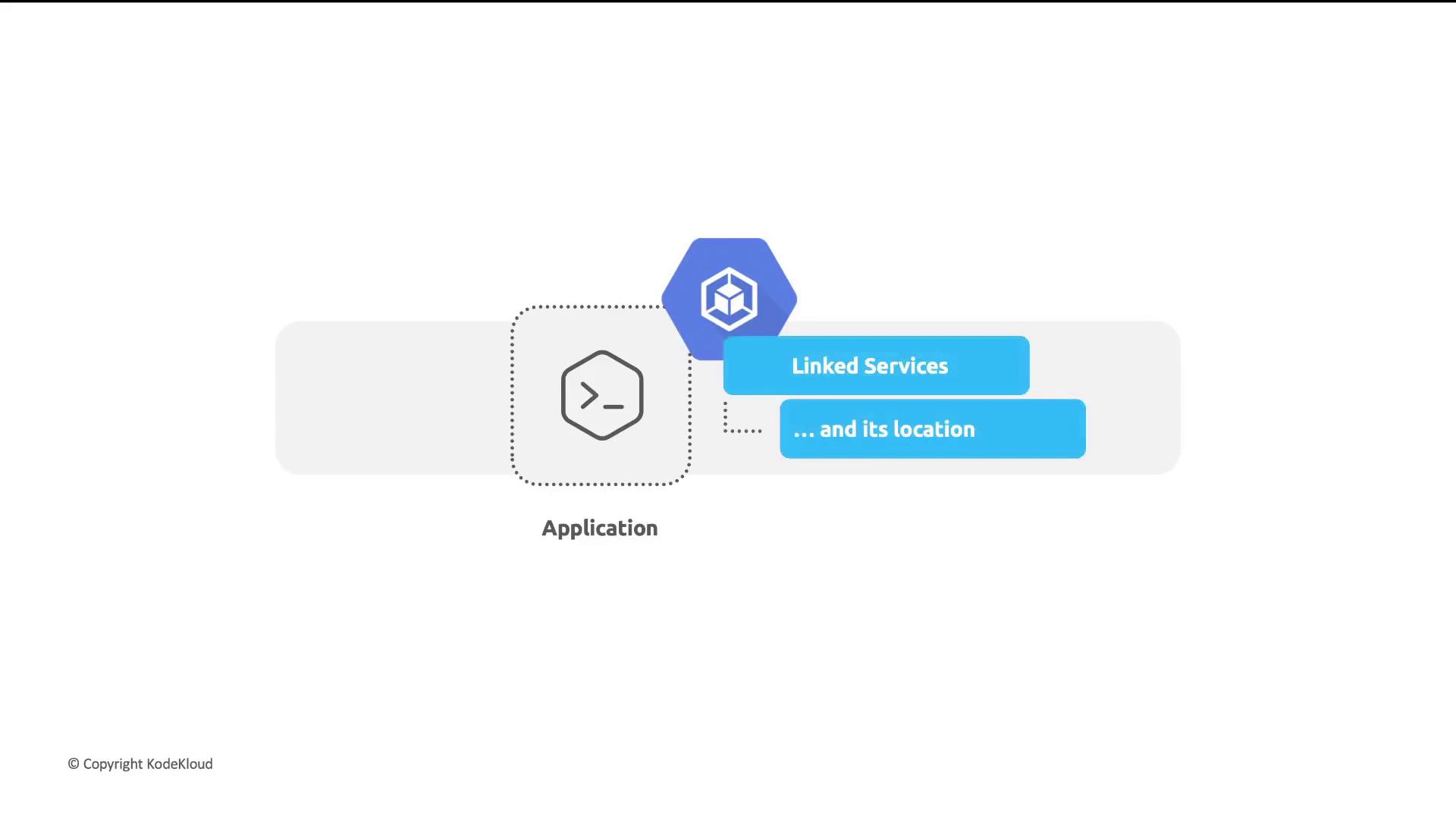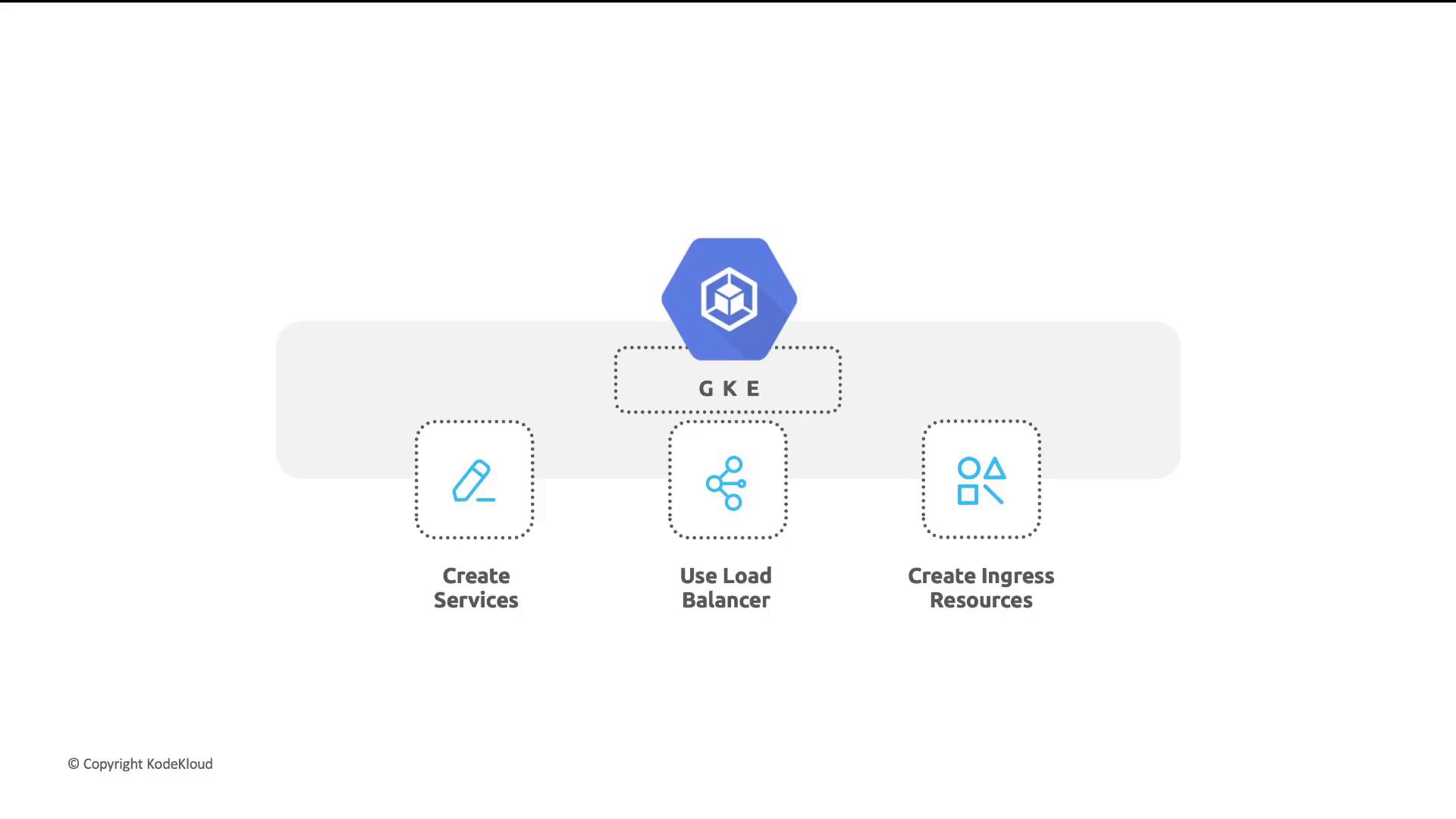GKE - Google Kubernetes Engine
Networking for GKE clusters
Section Introduction
Welcome to the Google Cloud Networking module. When architecting your applications, you must determine which services they interact with and where those services reside—whether inside your cluster or in external systems.

In this lesson, we’ll cover three key topics:
- Exposing Pods using Kubernetes Services for internal and external communication
- Provisioning Load Balancers to distribute traffic across your cluster
- Configuring Ingress resources to route and manage incoming requests
Exposing Applications Internally with Kubernetes Services
A Service in Kubernetes abstracts a set of Pods and provides a stable network endpoint. This allows applications to discover and communicate with each other without tracking individual Pod IPs.
| Service Type | Description | Use Case |
|---|---|---|
| ClusterIP | Internal-only IP within the cluster | Pod-to-Pod communication, microservices calls |
| NodePort | Opens a static port on each cluster node | Simple external access, debugging |
| LoadBalancer | Provisions a cloud provider’s load balancer | Production-ready external traffic distribution |
Note
By default, Services use the ClusterIP type. Change the type field in your Service manifest to NodePort or LoadBalancer for external access.
apiVersion: v1
kind: Service
metadata:
name: my-app-service
spec:
type: ClusterIP
selector:
app: my-app
ports:
- port: 80
targetPort: 8080
Leveraging Load Balancers for External Traffic
To expose your Service to the internet, set type: LoadBalancer. Google Cloud will automatically provision a network load balancer and assign a public IP.

- Create Service: Define a Service of type
LoadBalancer. - Provision LB: GKE allocates a public IP and configures forwarding rules.
- Distribute Traffic: Incoming requests are balanced across healthy Pods.
kubectl apply -f loadbalancer-service.yaml
kubectl get service my-app-service
Routing Traffic with Ingress
An Ingress resource defines HTTP(S) routing rules to Services. It provides host- and path-based routing and integrates with Google Cloud HTTP(S) Load Balancers for advanced features like SSL termination and cloud CDN.
Sample Ingress Manifest
apiVersion: networking.k8s.io/v1
kind: Ingress
metadata:
name: my-app-ingress
spec:
rules:
- host: example.com
http:
paths:
- path: /
pathType: Prefix
backend:
service:
name: my-app-service
port:
number: 80
Warning
Ensure your cluster has an Ingress controller enabled (e.g., GKE Ingress) before applying Ingress resources. Otherwise, routing rules won’t take effect.
Links and References
- Google Kubernetes Engine (GKE)
- Kubernetes Services Documentation
- Kubernetes Ingress Documentation
- Google Cloud Load Balancing
Watch Video
Watch video content